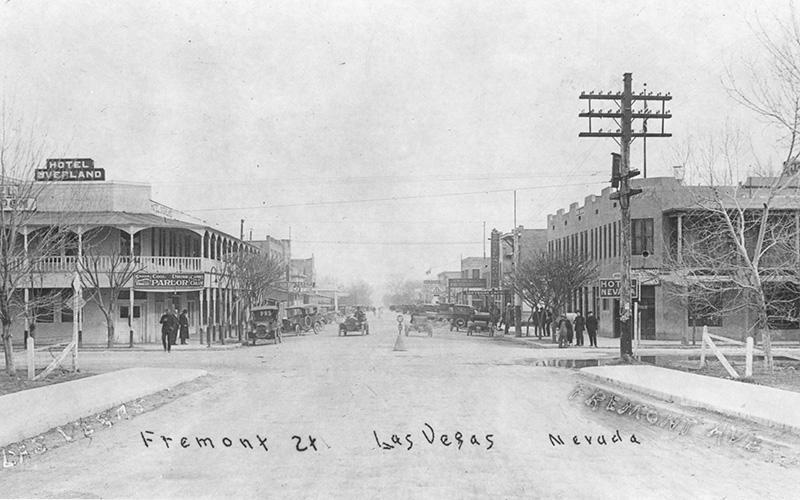Las Vegas, now synonymous with luxury, entertainment, and high-end real estate, began as little more than a barren desert. Over the decades, it has transformed into a sprawling metropolis with a diverse and dynamic real estate market. This evolution is not just a story of urban development but also one of resilience, vision, and transformation. Let’s take a closer look at how Las Vegas grew from a modest desert stopover to one of the most exciting real estate markets in the United States.
The Early Days: A Desert Oasis
Las Vegas’s history dates back thousands of years, with Native American tribes first inhabiting the area. However, the city as we know it began taking shape in 1905 when Las Vegas was officially founded as a stop along the San Pedro, Los Angeles, and Salt Lake Railroad. The availability of water from the artesian wells made it an attractive spot in the arid desert.
The real estate market during this period consisted mostly of modest homes and small businesses to accommodate the growing population of railroad workers and settlers. The famous Las Vegas Strip was nonexistent, with most of the activity centered around Fremont Street.
The 1930s: The Hoover Dam and Early Development
The construction of the Hoover Dam in the 1930s brought an influx of workers and transformed the economy. With the dam’s completion in 1935, Las Vegas began to grow rapidly. The city legalized gambling in 1931, which laid the foundation for its future as an entertainment hub.
During this time, real estate expanded beyond Fremont Street. Modest residential communities began to form, catering to workers and their families. The influx of new residents created a demand for housing, marking one of the city’s first real estate booms.
The Post-War Boom: Mid-Century Modern Development
The 1950s and 1960s ushered in a golden age for Las Vegas, fueled by the expansion of the casino industry and the arrival of high-profile entertainers like Frank Sinatra and Elvis Presley. This period saw the development of iconic neighborhoods like Paradise Palms, known for its mid-century modern homes.
Real estate during this era focused on accommodating both the burgeoning middle class and the city’s elite. Custom homes, spacious lots, and new neighborhoods began to emerge, reflecting the growing affluence of the city.
The 1980s and 1990s: Master-Planned Communities
By the 1980s, the Las Vegas real estate market was booming again, with a new focus on master-planned communities. Developers recognized the need for cohesive neighborhoods with built-in amenities, giving rise to iconic communities like Summerlin and Green Valley.
Summerlin, developed by the Howard Hughes Corporation, became one of the largest and most successful master-planned communities in the nation. Offering homes in various price ranges, along with parks, trails, and golf courses, Summerlin exemplified the shift toward suburban living.
Green Valley, located in Henderson, became another major draw for families and professionals seeking a high-quality lifestyle outside the hustle and bustle of the Strip.
The 2008 Financial Crisis: A Turning Point
The 2008 housing market crash hit Las Vegas particularly hard. Foreclosures skyrocketed, and home values plummeted, leaving a surplus of vacant properties. Despite this setback, the city demonstrated remarkable resilience.
Investors flocked to Las Vegas to capitalize on low home prices, leading to a gradual recovery. By the mid-2010s, the market rebounded, and new developments resumed, particularly in luxury neighborhoods and high-rise condos.
The Modern Era: Diversity and Luxury
Today, Las Vegas boasts a diverse real estate market, from affordable starter homes to ultra-luxurious estates in neighborhoods like The Ridges, MacDonald Highlands, and Ascaya. High-rise condos on the Strip cater to those seeking an urban lifestyle, while family-friendly communities in Henderson and North Las Vegas continue to thrive.
Recent years have seen an emphasis on sustainable and energy-efficient homes, reflecting broader national trends. Additionally, the city’s economic diversification into tech, healthcare, and logistics has brought new residents and increased demand for housing.
Looking Ahead: The Future of Las Vegas Real Estate
As Las Vegas continues to grow, its real estate market shows no signs of slowing down. With the city’s population projected to increase and new developments constantly underway, the demand for housing remains strong. Master-planned communities, luxury neighborhoods, and eco-friendly developments are expected to dominate the market in the coming years.
Why Choose Las Vegas?
The history of Las Vegas real estate is a testament to the city’s ability to adapt and thrive. Whether you’re a first-time buyer, investor, or looking for your dream home, Las Vegas offers something for everyone. From its humble beginnings in the desert to its current status as a real estate hotspot, Las Vegas continues to be a city of opportunity.
If you’re ready to explore the dynamic real estate market of Las Vegas, contact me today. Let’s find the perfect property that suits your lifestyle and goals!




